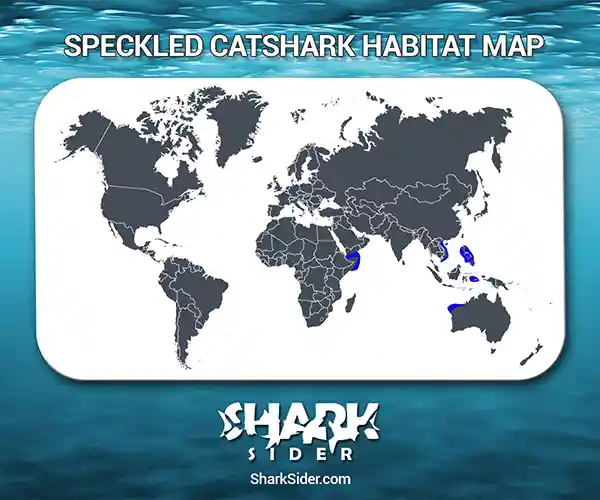The Speckled catshark is a catshark species found in the West Indian Ocean. Its dark spots and saddles characterize it. Previously, it was thought to also occur in the western Pacific. Still, more research is needed after discovering two similar species in the same region.
Speckled Catshark Scientific Classification |
|
| Kingdom | Animalia |
| Phylum | Chordata |
| Class | Chondrichthyes |
| Order | Carcharhiniformes |
| Family | Scyliorhinidae |
| Genus | Halaelurus |
| Scientific name | H. boesamani |
Description
The adult males of this species measure between 42-48 cm (1.3-1.6 ft), and females grow up to 43-47 cm (1.4-1.5 ft). The largest specimen on record is 48 cm (1.6 ft) long.
This catshark has a yellow-brown back and tail marked by eight dark saddles, dark splotches on the tail and dorsal fins, and several minor spots dotting the back, fins, and flanks. It has a pointed snout and a small mouth filled with long, pointed teeth. These teeth are longer in males. Its eyes are on top of its head, and its raised gills are on the upper portion of the head, just near the mouth.
The two dorsal fins are similar-sized. The first and second dorsal fins emerge over the pelvic and anal fins’ hind third.
Where do they live
Map Of The Speckled Catshark’s Habitat

This shark lives in the range of 21°N-26°S. It is found in the Gulf of Aden and off the Somalian coast. It also occurs in pockets in Vietnam, the Philippines, Indonesia, and Western Australia. This bottom-dwelling fish inhabits the continental and insular shelves at 37-250 m (121-820 ft).
Behavior
Reproductive
It is unclear whether these sharks are oviparous or ovoviviparous. Up to four eggs can develop inside the oviduct. Still, it is yet unknown whether these eggs hatch internally or are laid on the ocean floor. The young are born 7 cm (2.8 in) or longer.
Adaptations
They have smooth, streamlined bodies, a keen sense of smell and vision, and sharp teeth, familiar to most sharks.
Human interactions
These sharks are threatened by unregulated fishing throughout their range. Their small size makes them a lesser target of artisanal fisheries. In Somalia, foreign-owned vessels practice illegal fishing, and trawlers and nets catch them as part of the bycatch.
The IUCN has thus classed this species as “Vulnerable” or “VU.”
